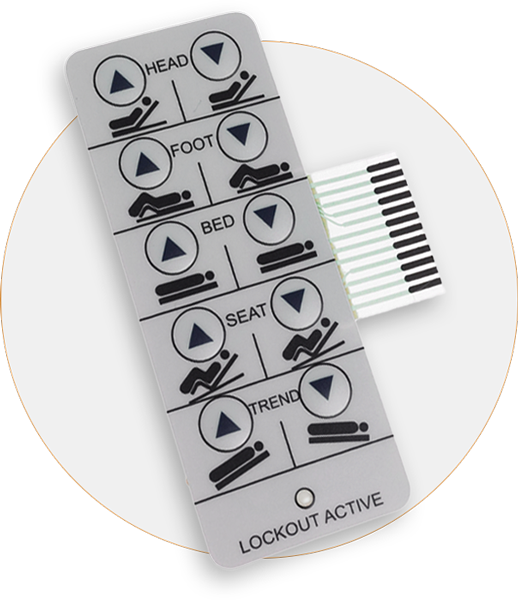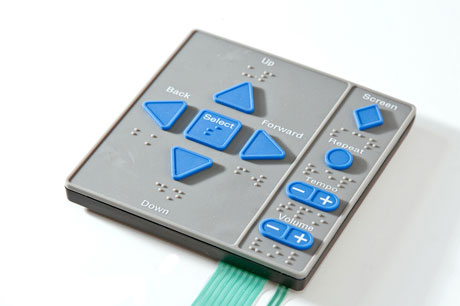Find Out How Membrane Switches Support Touch-Sensitive Applications with Precision
Find Out How Membrane Switches Support Touch-Sensitive Applications with Precision
Blog Article
The Ultimate Source on Membrane Layer Switches: Layout, Performance, and Applications
Membrane layer switches act as an interesting crossway of design and functionality, playing an essential function in contemporary interface throughout different industries. This source unpacks the crucial elements that add to their effectiveness, including graphic overlays and circuit traces, while also illuminating the devices behind their pressure activation. As we check out the varied applications of membrane switches, it ends up being noticeable that their adaptability and durability are essential in atmospheres varying from healthcare to customer electronic devices. However, the nuances of their layout and operational concepts may reveal also deeper understandings worth taking into consideration.

Understanding Membrane Layer Switches
Membrane layer switches are a kind of interface innovation commonly used in numerous digital gadgets, characterized by their slim, flexible style and functionality. These buttons are composed of several layers that consist of graphic overlays, sticky layers, and wiring, allowing a reliable and portable interface for customers. They can be found in home appliances, clinical devices, and commercial control panels, giving a dependable approach for individual communication.
One of the key advantages of membrane layer switches is their capability to resist impurities such as dirt and dampness, making them ideal for environments where durability is crucial. Their low-profile design permits smooth assimilation right into different applications, while the customizable graphic overlays boost customer experience by offering clear visual comments. Furthermore, membrane switches can fit a selection of technologies, such as tactile feedback and backlighting, additional improving their functionality.
The manufacturing procedure for membrane layer switches over commonly entails display die-cutting, lamination, and printing methods, guaranteeing accuracy and consistency in manufacturing. Generally, membrane switches stand for a flexible and effective service for modern digital gadgets, incorporating capability with visual allure in user interface layout.
Key Elements and Design Aspects
A variety of vital elements and style elements collaborated to create an efficient membrane layer switch. At the core, the graphic overlay offers both aesthetic and functional objectives, supplying an easy to use interface while securing internal components from environmental aspects. The option of materials, usually polyester or polycarbonate, affects toughness and tactile feedback.
Beneath the overlay, the adhesive layer ensures the switch adheres firmly to the substrate, which can be glass, metal, or plastic. The spacer layer is important, as it keeps the needed gap between the overlay and the circuit layers, permitting for efficient actuation. Membrane Switches. Circuit traces, generally made from conductive ink or adhesive, are published on a flexible substratum, making it possible for electric signals to be transferred when pressure is used
Layout factors to consider additionally consist of the arrangement of responsive domes or embossing that offer physical feedback to the customer, enhancing the general experience. Furthermore, the layout and spacing of the buttons need to be maximized for convenience of usage, guaranteeing that customers can browse the interface without effort. In general, these components and design components function synergistically to develop a trusted, functional membrane layer button customized to certain applications.
Functionality and Operation Mechanism
At the heart of reliable functionality for membrane layer switches over lies their operational system, which promotes customer communication with an easy yet reliable layout. These buttons operate the principle of stress activation, where a customer applies force to a designated location of the switch (Membrane Switches). This action compresses the layers of the switch, completing an electrical circuit that sends out a signal to the linked tool
The construction generally consists of a leading graphic layer, a glue spacer layer, and a lower circuit layer, which collectively create a robust user interface. When stress is applied, the leading layer collapses versus the bottom circuit layer, enabling conductive traces to connect. This style not only makes it possible for clear responsive comments however additionally makes sure resilience and integrity, as the switches are usually resistant to dirt and moisture.
Additionally, the convenience of membrane layer changes enables for integration with different modern technologies, including LED signs and microcontrollers, enhancing their functionality. By providing a structured interface that minimizes mechanical wear, membrane switches remain a preferred choice in applications ranging from customer electronics to commercial devices, guaranteeing optimal efficiency and user satisfaction throughout diverse environments.
Sorts Of Membrane Layer Buttons

Another substantial category is illuminated membrane switches, which incorporate backlighting to improve visibility in low-light problems. These switches are often made use of in control panels and control panels where clear visibility is necessary.
In addition, there are custom-made membrane changes designed to satisfy specific dimensional, visual, and useful demands. These modifications can include special shapes, colors, and designs, enabling for smooth combination right into different devices.

Applications Across Different Industries
Exactly how do membrane switches enhance performance throughout diverse sectors? In the clinical market, membrane switches play a vital function in tools such as analysis devices and client monitoring systems, where reliability and convenience of cleansing are extremely important.
In the vehicle sector, membrane layer switches are generally used in control panels and control board, offering user-friendly controls that enhance motorist safety and comfort. The consumer electronic devices field also gains from their personalized and light-weight features, allowing streamlined styles for smartphones and home appliances.
In addition, membrane layer switches find applications in industrial automation, where they add to reliable equipment operation and tracking systems. Their resistance to dirt and moisture guarantees capability in requiring conditions (Membrane Switches). In addition, the food and drink market utilizes membrane layer buttons for tools control, where health and toughness are crucial
Final Thought
In conclusion, membrane changes stand for a important site critical development in customer interface technology, defined by their special style and functionality. The adaptability of membrane switches promotes their application throughout diverse industries, from clinical tools to customer electronic devices.
Membrane layer changes serve as an appealing intersection of style and functionality, playing a critical function in modern individual interfaces across different sectors.Membrane layer switches are a type of individual interface modern technology commonly made use of in numerous digital gadgets, defined by their thin, flexible layout and performance.At the heart of reliable performance for membrane switches lies their operational mechanism, which assists in user communication through an easy yet reliable design. These switches operate on the principle of pressure activation, where a user applies pressure to an assigned location of the button.In verdict, membrane layer changes represent a vital innovation in individual interface innovation, characterized by their special design and functionality.
Report this page